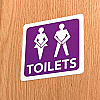Medications help the heart - if you take them
The physical act of taking most medications is simple: pop a pill in your mouth, and gulp it down with water. But people often don't take their medications when and how they should. Cost is one barrier, of course. So are complicated dosing regimens, side effects, and medication pick-up hassles.
Not taking medications as prescribed — what doctors call nonadherence — has profound personal, public health, and economic consequences (see "Striking statistics"). You and your doctor play important roles in remedying the problem.
Striking statistics40% to 50% — Rate at which people don't take medications as prescribed for chronic conditions such as heart disease 125,000 — Number of preventable deaths in the United States every year attributed to people not taking medications as directed $100 billion to $300 billion — estimated total annual cost of medication nonadherence Source: American Heart Journal, September 2011 |
Good deals on drugs
The high cost of many medications prevents some people from taking the ones they need. Some brand-name drugs cost $3 a pill. Take one of these a day, and if you pay out of your own pocket, that's $1,000 a year.
In addition, many health insurers and employers who pay the premiums are now shifting more of the cost of prescription medications onto consumers through higher copays and increased deductibles. Studies have shown, not surprisingly, that the higher a person's out-of-pocket cost for a new prescription, the less likely he or she is to fill it.
Many insurers now divide the drugs they'll pay for into three tiers. Tier 1 drugs, predominantly generics, have the lowest copays. Tier 2 drugs have middle-of-the-road copays. In tier 3, which usually includes newly approved drugs or brand-name medications for which a similar, lower-cost generic alternative exists, copays are the highest. A study showed that, regardless of income, people are less likely to fill prescriptions that insurers don't cover and those that require high copays (American Journal of Medicine, November 2011).
Whenever you get a new prescription, make sure it's the lowest-cost option available through your health plan. If not, ask your doctor if there's a medical reason for prescribing the more expensive drug.
There is some help on the cost front. The Affordable Care Act of 2010 is gradually eliminating the interruption in Medicare prescription drug coverage known as the doughnut hole. And Rx Assist (www.rxassist.org) is a clearinghouse of free medication programs sponsored by pharmaceutical companies. You can also look into discount generic-drug programs at large retailers and pharmacies.
If heart drugs were free, would people take them more reliably? Yes, but only modestly more so, according to a study from researchers at Harvard-affiliated Brigham and Women's Hospital. Adherence among people who received free drugs after hospital discharge for treatment of a heart attack still hovered around 50%. The no-copay group also experienced fewer subsequent heart problems, but again the difference was modest (New England Journal of Medicine, published online Nov. 14, 2011). So cost is clearly not the only impediment.
Doctors can help
Many people with cardiovascular disease take multiple medications, prescribed by multiple doctors, at different times of day, and under different conditions. Orchestrating all that — and ensuring you don't run out — can be downright complicated.
In a study, nearly 500 Chicagoans received a hypothetical 21-pill-a-day regimen that could have been consolidated into taking pills four times a day. But left to their own interpretation of label instructions, only 15% of the participants managed to do that. One reason: most people didn't understand that medications with two different wordings for the same dosage frequency — "twice daily" and "every 12 hours" — could be taken at the same time (Archives of Internal Medicine, Feb. 28, 2011).
Simplifying the process begins with you and the prescriber. "Talk to your doctor about any problems you're having or are likely to have buying or taking your medicine," said Dr. William Shrank, a co-author of several medication-adherence studies and a faculty member at Harvard-affiliated Brigham and Women's Hospital. Doctors can often prescribe multiple medications with matching time schedules, for example. (See also "Medication memory aids.")
Medication memory aidsUsing a daily pill organizer is a tried-and-true way to keep track of which medication to take and when. Also, some drugs now come in blister packs with calendars printed on them to help people remember. Websites such as mymedschedule.com can help you custom-tailor and print medication schedules from your computer. You can also set up email or text-message reminders there. There are also downloadable smartphone apps you can program to buzz or bing you when it's time to take your medication. |
Surmounting side effects
It's a sad fact that drugs often cause bothersome side effects. With the most common medications for heart disease, these include fatigue, headache, nausea, dizziness, coughing, and muscle pain. While not life-threatening, they can discourage people from taking medication as prescribed.
Discuss any unwanted effects promptly with your doctor or pharmacist. They will likely have suggestions about how you can ease side effects, sometimes by switching to a drug with similar benefits but fewer potential problems. If you're taking a new drug that's causing mild side effects, your doctor may suggest that you wait a few weeks to see if they diminish, as they often do once your body gets used to a new medication. Never stop or adjust the dosage of medication on your own.
If you understand why you're taking a medication, you may be less likely to get derailed by side effects. If you're unsure about the benefits of any drug you're taking, ask your doctor or pharmacist for an explanation.
Pick-up, delivery strategies matter
In most areas of the United States, mail-order delivery of drugs is now quite common — and it may improve adherence.
In a study of more than 100,000 people who were prescribed a statin for the first time, 85% who filled it through a mail-order pharmacy achieved their target LDL levels within 15 months, compared with 74% of those who picked up their statin from a local pharmacy (Journal of General Internal Medicine, published online July 20, 2011). This suggests that disability or simply being too busy to stop at the pharmacy affects whether people take medication conscientiously.
It's important to accept that procuring, taking, and paying for medication can be complicated, emphasized Dr. Shrank. Ask for help from your doctors, spouse, family, or friends. Creating a personalized system to help ensure that you take your medicine every day is time well-spent.
Disclaimer:
As a service to our readers, Harvard Health Publishing provides access to our library of archived content. Please note the date of last review or update on all articles.
No content on this site, regardless of date, should ever be used as a substitute for direct medical advice from your doctor or other qualified clinician.












